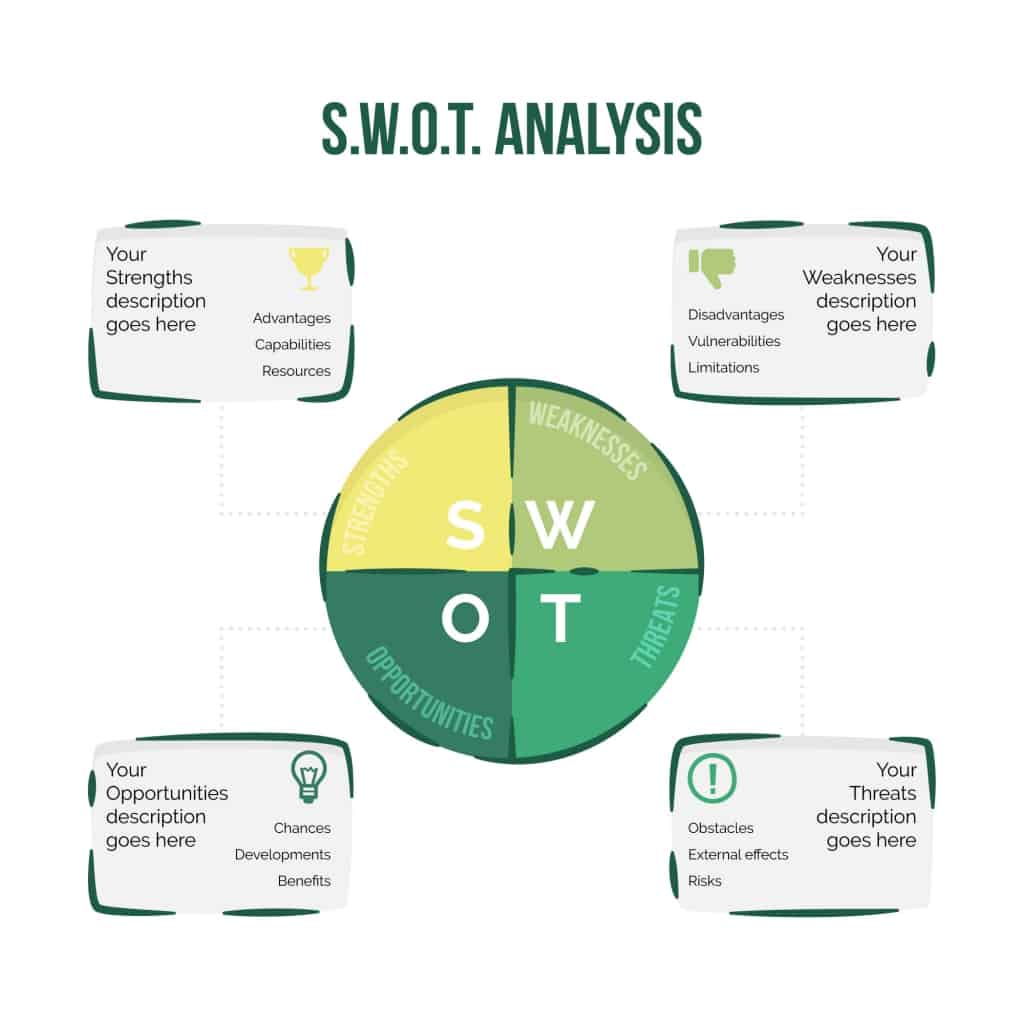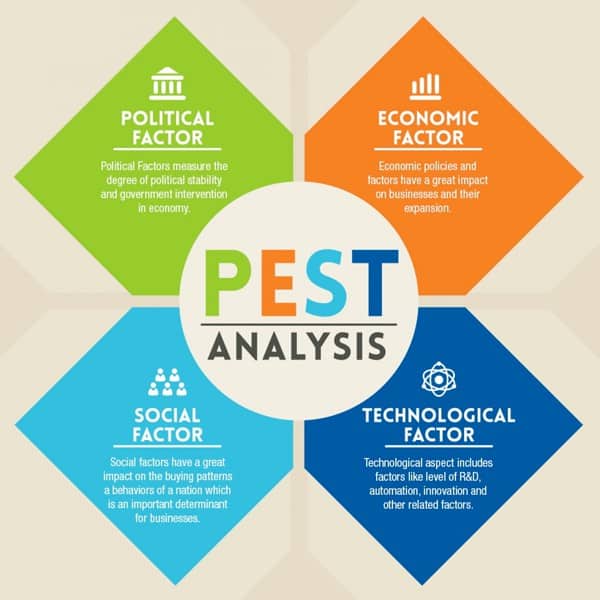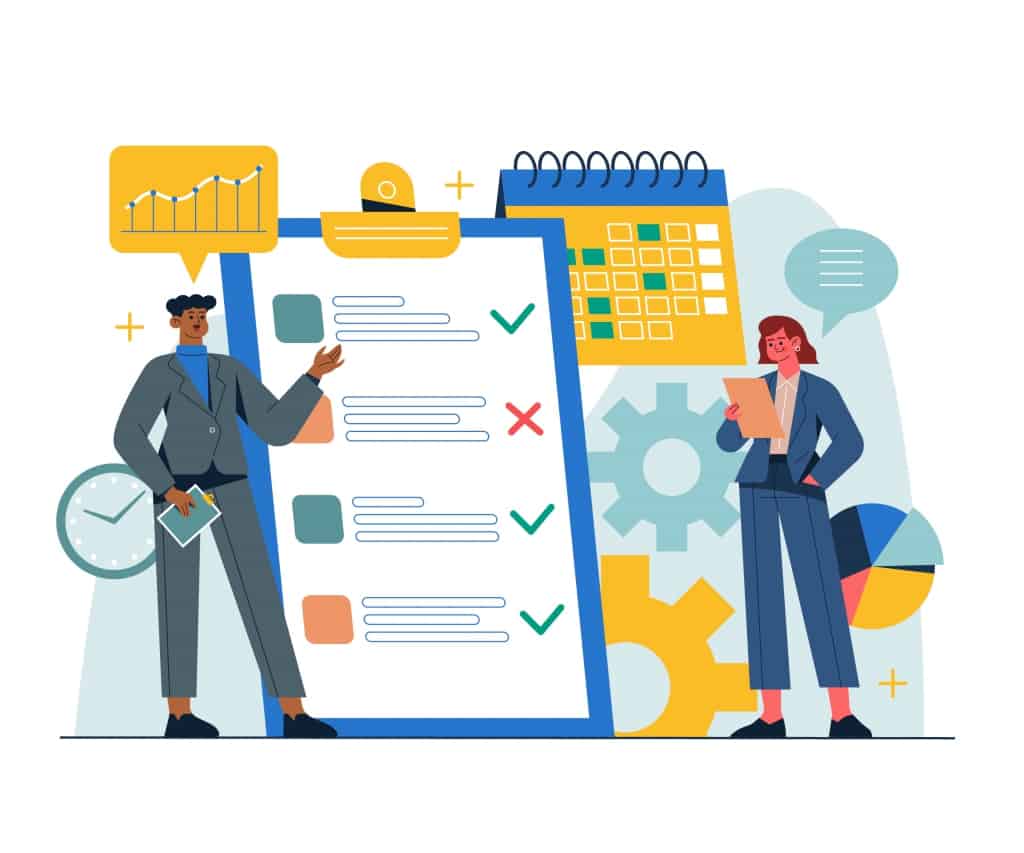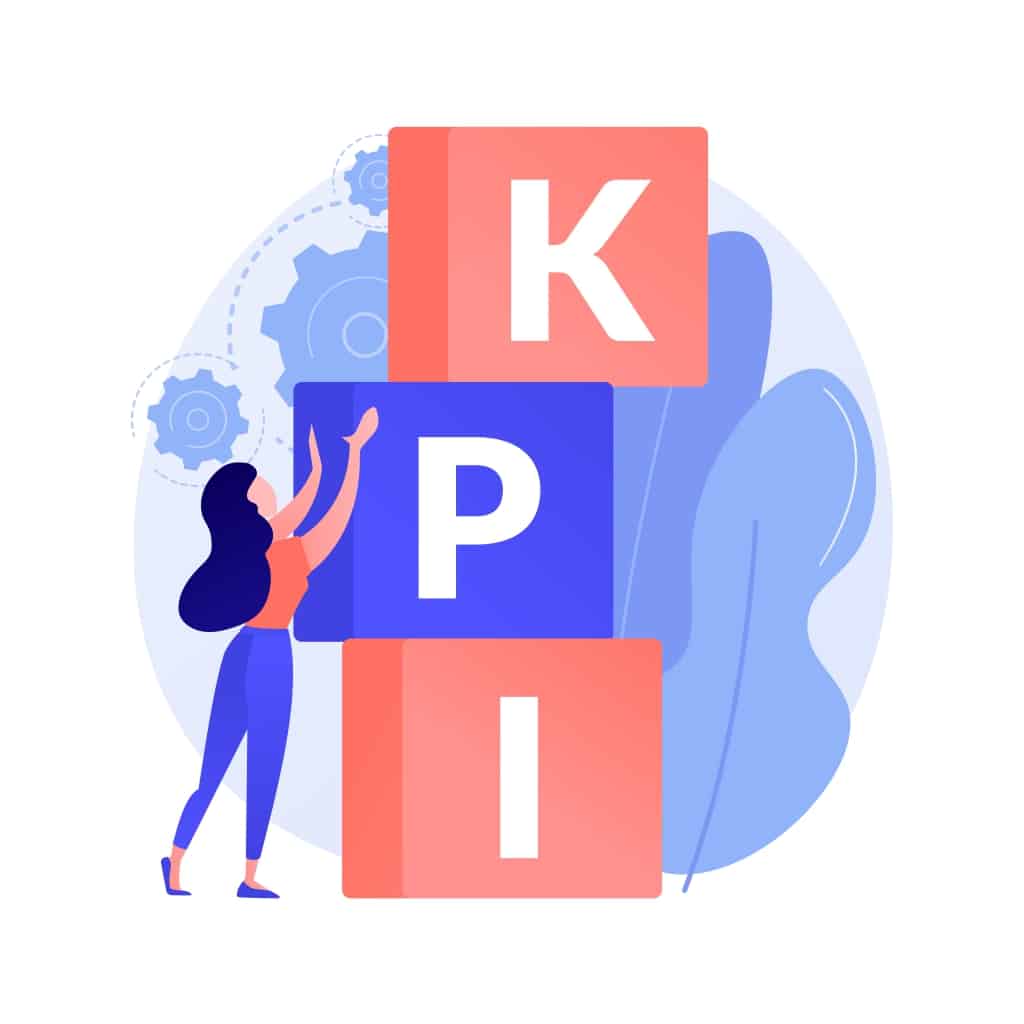Looking for Strategic Plan Examples? Having a strategic plan is essential for any business or organization's growth. A well-crafted plan can make all the difference in the success of your venture. It helps you have a realistic vision for the future and maximize the company's potential.
So, if you struggle to develop a strategic plan for your business or organization. In this blog post, we will discuss a strategic plan example along with few fun ideas for strategic planning and tools that can serve as a guide to help you create a successful plan.
Table of Contents
What Is A Strategic Plan?
A strategic plan is a plan that outlines an organization's long-term goals, objectives, and strategies for achieving them.
It is a roadmap that helps your organization prepare and allocate resources, efforts, and actions to achieve its vision and mission.

Specifically, a strategic plan usually lasts 3-5 years and may require the organization to evaluate its current position with its strengths, weaknesses, potential, and competitive level. Based on this analysis, the organization will define its strategic goals and objectives (they need to be SMART: specific, measurable, achievable, relevant, and time-bound).
Following that, the plan will list the required steps and actions to achieve these goals, as well as the resources needed, timelines, and performance measures to track progress and success.
To guarantee success, your strategic plan needs tools that help with planning, management, communication, collaboration, and accountability to help the organization stay focused and stick to the workflow.
Strategic Plan Examples
Here are some strategic planning models your business can use:
1/ SWOT Analysis - Strategic Plan Example
The SWOT Analysis model was developed by Albert Humphrey. This model is a well-known business analysis model for organizations that want to create a strategic plan by evaluating four factors:
- S - Strengths
- W - Weaknesses
- O - Opportunities
- T - Threats

With these factors, your organization can understand its current situation, advantages, and areas where need to improve. In addition, your organization can identify the external threats that may affect it and the opportunities to seize in the present or the future.
After having such an overview, organizations will have a solid basis for effective planning, avoiding risks later.
Strategic Plan Example: To help you better understand how to use SWOT analysis to develop a strategic plan, we will give an example.
You have a small business that sells handmade soap products. Here is a SWOT analysis of your business:
| Strengths: - High-quality products with natural ingredients - Already have a loyal customer base with a close brand image - Have a certificate of high-quality production and sourcing - Customer service is appreciated | Weaknesses: - Limited marketing and advertising, weak online communication channels - Most sales come from a single retail location - Few product types, with most products focusing on a single scent |
| Opportunities: - Growing market demand for natural and organic products - Customers are more interested in self-care and healthcare products - Potential to expand distribution through e-commerce and partnerships with gift shops | Threats: - Increased competition from other natural soap manufacturers - Economic recession could affect sales - Changes in consumer preferences or trends can impact demand |
Based on this SWOT analysis, your business can develop a strategic plan that focuses on
- Expand product distribution channels
- Developing new product lines
- Improve online marketing and advertising
With this strategy, you can leverage your strengths, such as high-quality products and personalized customer service.
2/ Balanced Scorecard Model - Strategic Plan Example
Balanced Scorecard Model is a strategic planning model that helps businesses develop sustainably and reliably through all 4 aspects:
- Financial: Organizations need to measure and monitor financial results, including fixed costs, depreciation expenses, return on investment, return on investment, revenue growth rate, etc.
- Customers: Organizations need to measure and evaluate customer satisfaction, along with their ability to meet customer needs.
- Internal process: Organizations need to measure and evaluate how well they are doing.
- Learning & Growth: Organizations focus on training and helping their employees develop, helping them improve their knowledge and skills to maintain a competitive edge in the market.
Strategic Plan Example: Here is an example to help you understand more about this model:
Assuming you are the owner of a famous coffee brand, here is how you apply this model to your strategic plan.
| Financial | Goal: Increase revenue by 45% in the next 3 years Objectives: - Increase average order value by 10% through upselling and cross-selling - Expand distribution channels and branches to reach new customers and increase revenue Measures: - A revenue growth rate - Average order value - Number of new distribution channels - Number of newly opened branches |
| Customer | Goal: Improve customer satisfaction and loyalty Objectives: - Developing new flavours to expand the product menu - Implement a loyalty rewards program to encourage repeat purchases Measure: - Customer Satisfaction Score - Customer retention rate - Number of new products sold |
| Internal business processes | Goal: Improve production efficiency and reduce costs Objectives: - Streamline production processes to reduce labor costs - Optimizing supply chain management to reduce material costs Measure: - Production cycle time - Material cost per cup - Labor cost per cup |
| Learning and growth | Goal: Develop employee skills and knowledge to support growth Objectives: - Provide ongoing training and development opportunities - Cultivate a culture of innovation and continuous improvement Measure: - Employee Satisfaction Score - Number of training hours per employee - Number of new product ideas generated by employees |
The Balanced Scorecard model ensures that a business is considering all aspects of its operations and provides a framework for measuring progress and adjusting strategies as needed.
3/ Blue Ocean Strategy Model - Strategic Plan Example
Blue Ocean Strategy Model is a strategy of developing and expanding a new market in which there is no competition or competition is unnecessary.
There are six basic principles for the successful implementation of a blue ocean strategy.
- Reconstruct market boundaries: Businesses need to rebuild market boundaries to break out of competition and form blue oceans.
- Focus on the big picture, not the numbers: Businesses need to focus on the big picture when planning their strategy. Don't get bogged down in details.
- Go beyond the existing demands: Instead of focusing on existing products or services, they need to identify those who are non-customers or potential customers.
- Get the strategic sequence right: Businesses need to create a value proposition that differentiates them and adjust internal processes, systems, and people.
- Overcome organizational obstacles. To successfully implement the Blue Ocean Strategy, the business will need buy-in from all levels of the organization and communicate strategy effectively.
- Strategy Execution. Businesses implement strategy while minimizing operational risks and preventing sabotage from within.

Strategic Plan Example: The following is an example of applications of the Blue Ocean Model.
Let's continue to assume that you are an organic soap business owner.
- Reconstruct market boundaries: Your business can define a new market space by creating a line of soaps that are only for sensitive skin.
- Focus on the big picture, not the numbers: Instead of just focusing on profits, your business can create value for customers by emphasizing natural and organic ingredients in soap products.
- Go beyond the existing demands: You can tap into new demand by identifying non-customers, such as those with sensitive skin. Then create compelling reasons for them to use your product.
- Get the strategic sequence right: Your business can create a value proposition that sets it apart from competitors, in this case with natural and organic ingredients. Then align its internal processes, systems, and people to deliver on that promise.
- Overcome organizational obstacles: To successfully implement this strategy, your business needs support from all levels of stakeholders for this new product.
- Strategy Execution: Your business can build performance metrics and adjust the strategy over time to ensure they're performing effectively.
Tools For Effective Strategic Planning
Here are some popular tools to help you have an effective strategic plan:
Tools For Data Gathering and Analysis
#1 - PEST Analysis
PEST is an analysis tool that helps your business understand the "big picture" of the business environment (usually macro-environmental) in which you are participating, thereby identifying opportunities and potential threats.

PEST Analysis will evaluate this environment through the following 4 factors:
- Politics: Institutional and legal factors can affect the viability and development of any industry.
- Economics: Organizations need to pay attention to both short-term and long-term economic factors and government intervention to decide which industries and areas to invest in.
- Social: Each country and territory has its own unique cultural values and social factors. These factors create the characteristics of consumers in those regions, which make a huge impact on all products, services, markets, and consumers.
- Technology: Technology is an important factor because it has a profound impact on products, services, markets, suppliers, distributors, competitors, customers, manufacturing processes, marketing practices, and the position of organizations.
PEST analysis helps your business understand the business environment. From there, you can map out a clear strategic plan, make the most of the opportunities that come your way, minimize the threats and easily overcome the challenges.
#2 - Porter's Five Forces
Five Forces represent 5 competitive forces that need to be analyzed to assess the long-term attractiveness of a market or a segment in a particular industry, thereby helping your business have an effective development strategy.

Here are those 5 forces
- Threat from new opponents
- Power of suppliers
- Threat from substitute products and services
- Power of customers
- The fierce competition of competitors in the same industry
These five factors have a dialectical relationship with each other, showing the competition in the industry. Therefore, you need to analyze these factors and develop strategies to identify what is particularly attractive and outstanding for the business.
#3 - SWOT Analysis
More than being a model for strategic planning, SWOT is a valuable tool for conducting market analysis. By utilizing SWOT, you can pinpoint the strengths, weaknesses, opportunities, and threats of your organization before implementing a successful strategy.
Tools For Strategy Development and Implementation
#4 - Scenario planning
Scenario planning is a strategic planning tool that considers multiple future scenarios and evaluates their potential for an organization.
The scenario planning process has two stages:
- Identifying the key uncertainties and trends that could shape the future.
- Developing multiple response scenarios based on those factors.
Each scenario describes a different possible future, with its own unique set of assumptions and outcomes. By considering these scenarios, your organization can better understand various possible futures it may face, and develop strategies that are more resilient and adaptable.

#5 - Value Chain Analysis
The Value Chain Analysis model is an analytical tool for understanding how the activities within your organization will create value for customers.
There are three steps to performing a value chain analysis for an organization:
- Divide the organization's activities into main activities and supporting activities
- Cost breakdown for each activity
- Identify the fundamental activities that create customer satisfaction and organizational success
From the three steps above, your organization can more effectively measure its capabilities by identifying and evaluating each activity. Then each value-creation activity is considered a resource to create a competitive advantage for the organization.
#6 - Critical Success Factors
Critical Success Factors (CSF) refer to the causes that lead to the success of a business or set out what employees need to do to help their business to achieve success.
Some helpful questions for determining your business's CSF include:
- What factors are likely to lead to the desired outcome of the business?
- What requirements must exist to produce that result?
- What tools does the business need to achieve that goal?
- What skills does the business need to achieve that goal?
By defining the CSF, your business can create a common reference point for what it needs to do to achieve its goals, thereby motivating the workforce to get there.

#7 - A Balanced Scorecard
Besides being a model for strategic planning, A Balanced Scorecard is a performance management tool that helps you track progress toward your strategic objectives. It also helps you to measure and communicate your progress to stakeholders.
#8 - Blue Ocean Strategy Canvas
Apart from functioning as a strategic planning model, the Blue Ocean Strategy Canvas assists in recognizing new market opportunities by aligning your organization's offerings with those of your competitors.
By using this tool, you can identify areas where your organization can stand out and generate new demand.
Tools For Measurement and Evaluation
#9 - Key Performance Indicators
Key Performance Indicators (KPIs) is a tools to measure and evaluate work performance. KPIs are usually expressed through numbers, ratios, and quantitative indicators, to reflect the performance of groups or divisions of the business.
KPIs help businesses monitor and evaluate the performance of employees in a transparent, clear, specific, and fair manner thanks to specific data.

Tools For Brainstorming
#10 - Mind Mapping
Mind mapping is a visual tool that can be used during the strategic planning process to help with brainstorming and organizing ideas. It is a method of visually representing information and ideas by drawing a diagram.
Besides helping discover new ideas, it helps to find connections between various strategic objectives, which can ensure that the strategic plan is comprehensive and effective.
Key Takeaways
Having a well-defined strategic plan example is critical for any organization to achieve its goals and objectives. Therefore, with the information in the article, your organization may develop a complete strategic plan that is in line with its vision and mission, resulting in long-term growth and success.
And do not forget by using various strategic planning tools and models such as SWOT analysis, Balanced Scorecard, and Blue Ocean Strategy,... your organization can identify its strengths, weaknesses, opportunities, and threats, track progress toward its goals, and develop innovative strategies to differentiate itself in the market.







